By Elizabeth DiEmanuele
There is more to feminism than the, nowadays, simplistic “equal rights among the sexes,” or the inaccurate assumption that the feminist is a ‘man-hater’. While the latter is a product of the extremism that follows every significant civil rights movement, it is, unfortunately, the memorable argument that arises in the anti-feminist debate. However, contrary to much popular belief, feminist literature is much more complicated than the simple opposition of feminist (man-hater) or non-feminist (man-lover). Looking at society in all its complexity, the feminist theorist puts a magnifying glass to the economies of everyday action, voicing a need for awareness, and in some cases, a need for change.
Unfortunately, most feminist literature remains hidden from everyday society. Often tedious, feminist literary theory can be inaccessible and perhaps, elitist, in its complex use of language and analysis. As Gloria Steinem once said, “Nobody cares about feminist academic writing. That’s careerism. These poor women in academia have to talk this silly language that nobody can understand in order to be accepted.” With an absolute love and respect for the extremely accomplished and wonderful Gloria Steinem, it seems there is a need to repair the disconnect between the masses and academia. Feminist literary theory is important because, like any study of injustice, it exposes the illogical format of the arguments that support prejudice and discrimination. Furthermore, it provides a point of reason—and thus, understanding—for those who are unaffected. Here is a list of essential feminist theory reads, with some brief analysis for your awareness.
-
Mary Wollstonecraft, A Vindication of the Rights of Women (1792)
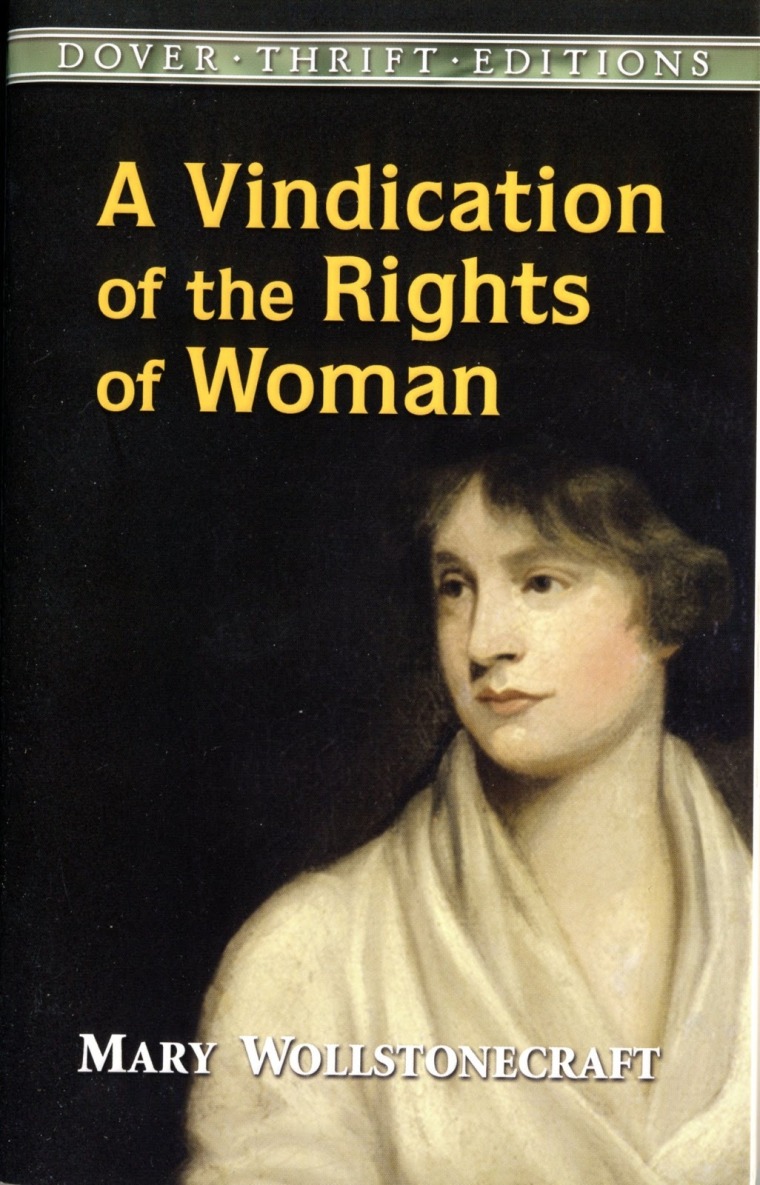
“Women are told from their infancy, and taught by the example of their mothers, that a little knowledge of human weakness, justly termed cunning, softness of temper, outward obedience, and a scrupulous attention to a puerile kind of propriety, will obtain for them the protection of man; and should they be beautiful, every thing else is needless, for at least twenty years of their lives.”
The key word in the above quotation is “taught”; women are taught by society to act, speak and think they way they do. In this way, Wollstonecraft’s A Vindication of the Rights of Women, one of the first works in feminist philosophy, takes a liberal stance on feminism. Challenging essentialism, the notion that women are inherently docile and weak, Wollstonecraft argues that it is patriarchal society’s limitation of women’s education that makes them inferior. While the man may be physically stronger, his soul and the woman’s soul are derived from the same Creator. Thus, his and her moral substance is equal. It is the choice to deny women access to education that creates such a power imbalance. Using this argument, Wollstonecraft maintains the notion that men should view their wives as “companions” in their mutual equality. Although it is arguable that this work is not feminist, as the word never occurs, Wollstonecraft’s Vindication is the first step towards a feminist movement, voicing the injustices done to women in a logical and accessible way.

- Sojourner Truth, “Ain’t I a Woman?” (1851)

“Then that little man in black there, he says women can’t have as much rights as men, ’cause Christ wasn’t a woman! Where did your Christ come from? Where did your Christ come from? From God and a woman! Man had nothing to do with Him.”
As an anti-slave speaker, Sojourner Truth’s speech garnered wide publicity in the early 1860s, during the American Civil War. Like Wollstonecraft, Truth stresses the need for equality among the sexes. She does so through valorizing the experience of the woman and asking questions that expose the flaws in the ‘man-superiority argument’. Truth’s strong use of rhetorical questions and sharp examples creates a compelling speech in favour of the innate equality of women.
-
Friedrich Engels, The Origin of the Family, Private Property and the State (1884)
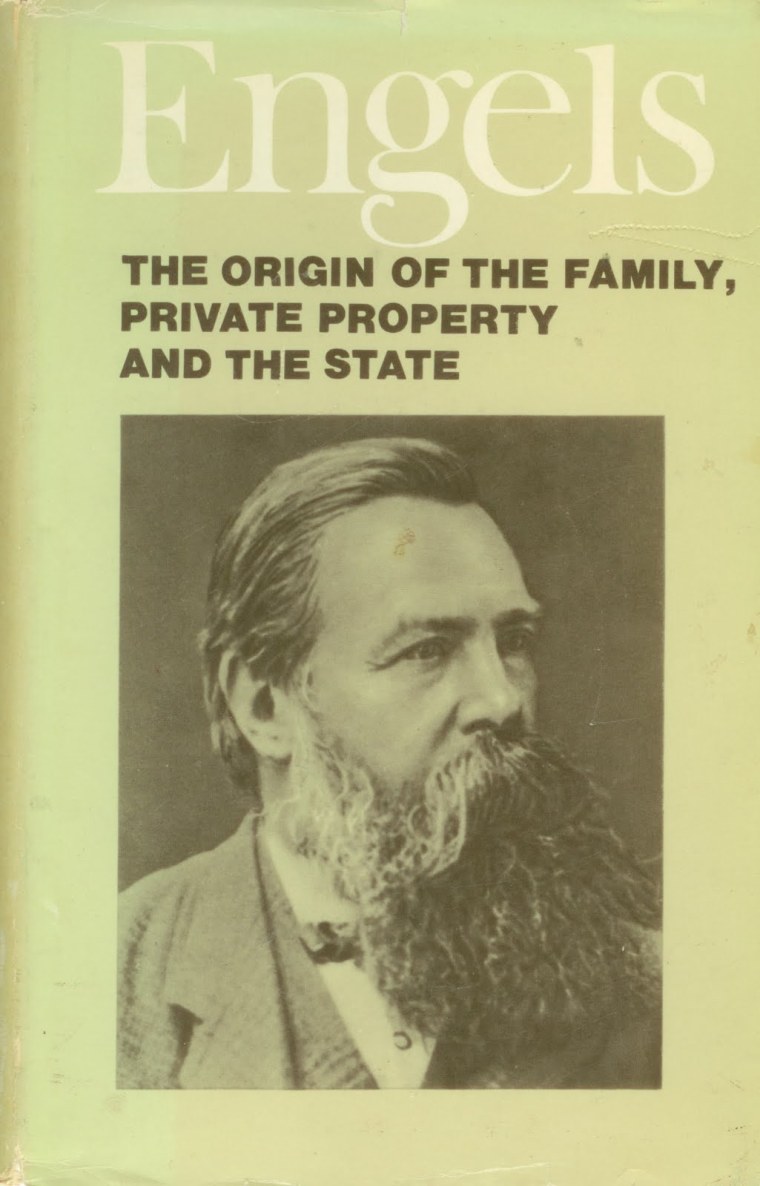
“The first class opposition that appears in history coincides with the development of the antagonism between man and woman in monogamous marriage, and the first class oppression coincides with that of the female sex by the male.”
In his analysis of gender oppression, Friedrich Engels founds Marxist feminism. As he argues, a woman’s subordination is a sociological issue. Engels analyzes sexual morality, including the societal pressures on women to be pure and virginal in relation to the severe punishments they experience with adultery. He connects this pattern to the capitalist development of owning private property. In relation to the nuclear family, marriage to a pure, submissive woman is necessary for a man, as it ensures child legitimacy and later, inheritance. Engels further parallels this relationship to that of the proletariat and bourgeoisie. Considering this relation, a woman’s subordination is a struggle of class that is enforced because it secures capitalist desires.
-
Virginia Woolf, A Room of One’s Own (1929)
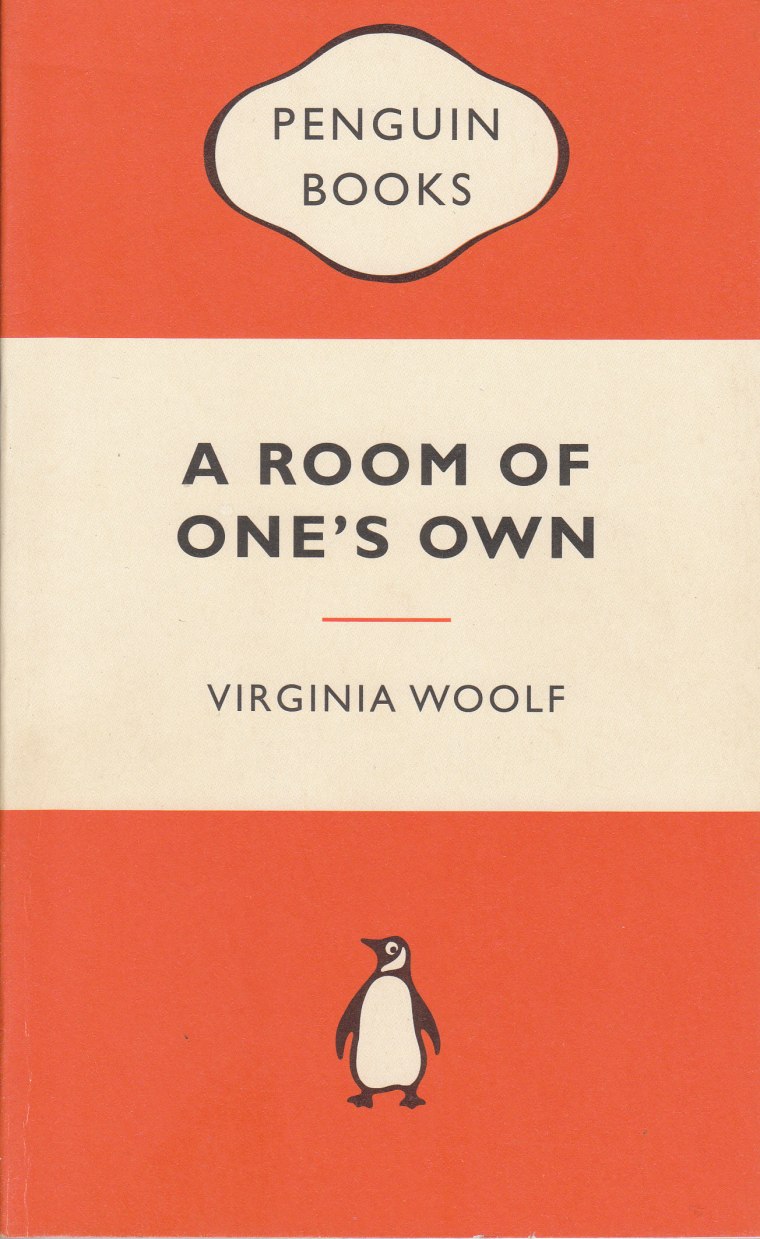
“I told you in the course of this paper that Shakespeare had a sister; but do not look for her in Sir Sidney Lee’s life of the poet. She died young—alas, she never wrote a word. She lies buried where the omnibuses now stop, opposite the Elephant and Castle. Now my belief is that this poet who never wrote a word and was buried at the cross–roads still lives. She lives in you and in me, and in many other women who are not here to–night, for they are washing up the dishes and putting the children to bed. But she lives; for great poets do not die; they are continuing presences; they need only the opportunity to walk among us in the flesh.”
“A Room of One’s Own” is an extended essay that centers on the idea that “a woman must have money and a room of her own if she is to write fiction.” Using this argument, Woolf suggests that there are fewer works of literature by women because of their lack of property and finances. A woman requires financial independence in order to produce creatively. Reminiscent of Wollstonecraft, Woolf asserts the need for women to gain access to education to further their independence. Her famous fictional figure, Judith Shakespeare (Shakespeare’s sister), plays on the notion that a woman with Shakespeare’s talent could have existed, but her lack of education prevents society from ever knowing of it. In addition, Woolf also stresses the need for a gynocentric literature that embraces the woman’s perspective. She chronicles a list of accomplished women authors, such as Aphra Behn, Jane Austen, the Brontë sisters, and George Eliot. In doing so, Woolf creates a canon of women’s literature that embraces the woman’s voice in its truest form.

-
Simone de Beauvoir, The Second Sex (1949)

“One is not born, but rather becomes, a woman.”
Simone de Beauvoir is the first to distinguish the difference between gender and sex. In The Second Sex, she explains that sex is biological while gender is socially constructed. By regarding femininity as a construction, de Beauvoir reveals that a woman’s social surroundings shapes her “inferior” identity, not biology. A woman is not born passive or as an “Other” to the man-Subject. It is society that constructs her as “Othered” and inferior. In specifying a difference between being a woman and being feminine, de Beauvoir reveals that every individual has their own subjectivity, despite their sex. It is the constructions of society, such as women needing to be pure, submissive, passive and so forth, that have stolen the woman’s right to her own individuality. In this way, the text’s introduction of constructivism sparks the beginnings of the Second Wave of feminism, making it a primary go-to text for later feminists, including Betty Friedan and Kate Millet.
-
Betty Friedan, The Feminine Mystique (1963)

“The key to the trap is, of course, education. The feminine mystique has made higher education for women seem suspect, unnecessary and even dangerous. But I think that education, and only education, has saved, and can continue to save, American women from the greater dangers of the feminine mystique.”
Like Simone de Beauvoir, Betty Friedan is also credited for founding the ideas that surrounded Second Wave feminism. While her work echoes Wollstonecraft and Woolf’s call for educating women, it takes the argument a bit further. Her invention of the term “the feminine mystique,” the false idea that the woman is to only be a mother and housewife, follows de Beauvoir’s belief in constructivism. As Friedan argues, the mystique is an artificial idea that the woman must maintain her motherhood in order to fulfill her pre-ordained identity. It follows that “masculine” women, those who want education or a career, go against their ‘natural’, essentialist role. Through an analysis of the ‘unhappy housewife syndrome’, Friedan calls for women to reject the mystique to pursue their innate potential.
-
Kate Millet, Sexual Politics (1970)

“Patriarchy, reformed or unreformed, is patriarchy still: its worst abuses purged or forsworn, it might actually be more stable and secure than before.”
Written as Millet’s PhD dissertation, Sexual Politics is the first theoretical approach to feminism. She confronts the role of patriarchy in sexual relations through the use of Freud and other key academics. Millet ultimately argues that the literary canon, such as the works of D. H. Lawrence, Henry Miller and Norman Mailer, are sexist. Male literature uses sex to degrade women. Reviewing ideas that were often glossed over by previous critics, Millet exposes the prejudices against women that are deeply ingrained in the literary canon.
-
Hélène Cixous, The Laugh of Medusa (1975)

“Be-cause no woman stockpiles as many defenses for countering the drives as does a man. You don’t build walls around yourself, you don’t forego pleasure as “wisely” as he. Even if phallic mystification has generally contaminated good relationships, a woman is never far from “mother” (I mean outside her role functions: the “mother” as nonname and as source of goods). There is always within her at least a little of that good mother’s milk. She writes in white ink.”
The “white ink,” signifying the mother’s milk, embraces the woman. Cixous challenges gender normativity and the embedded patriarchy in language, sparking the beginnings of écriture féminine, “women’s writing,” the embodiment of the female body and her difference in language. The “white ink” calls on writers of both sexes to find a new language for women beyond the Lacanian symbolic order (the patriarchal structure of language that others the woman). Cixous embraces the woman’s sexuality, speaking of motherhood, orgasm and myth. In her address of the myth of Medusa, she suggests that male fear is a convenience in literature and that women must change history’s meaning. That “you only have to look at Medusa straight on to see her. And she’s not deadly. She’s beautiful and laughing.” The laugh, being a semiotic, beyond-language experience, reveals the task to portray women outside of conventional language so that they may be free Subjects, rather than Others to the patriarchal, written word.

-
Luce Irigaray, This Sex Which Is Not One (1977)
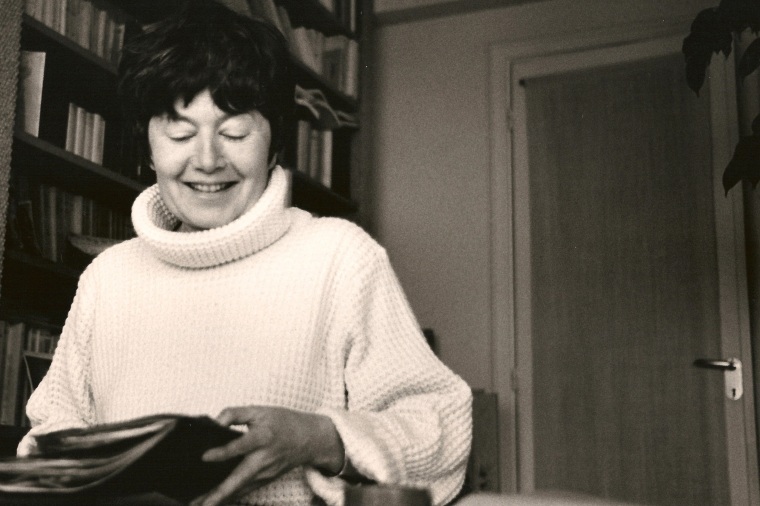
“Woman has sex organs more or less everywhere. She finds pleasure almost anywhere. Even if we refrain from invoking the hystericization of her entire body, the geography of her pleasure is far more diversified, more multiple in its differences, more complex, more subtle, than is commonly imagined—in an imaginary rather too narrowly focused on sameness.”
For Irigaray, female sexuality, at this point, has only been viewed in terms of “masculine clitoral activity” versus “feminine vaginal passivity.” In this way, the woman’s pleasure only amounts to clitoris sex, a “hole-envelope that serves to sheathe massage the [‘self-embracing’] penis in intercourse.” Irigaray deduces that the woman’s sexuality has only been recognized in a state of “lack” and “penis-envy.” The masculine view of sexuality makes the woman a “prop” or “object” of his pleasure, creating a resultant dependency on the man and a lack of knowing what she, the woman, wants. Countering the societal view of sex, Irigaray evidences that the woman has a diverse range of pleasure beyond the libidinal economy that dictates the orgasmic woman as merely serving the masculine, as never measuring up to its sheer superiority. The woman is a plurality of pleasure, always capable of orgasm, unlike the man, who becomes exhausted. Despite woman’s plurality, Irigaray infers that society has an economy where “women are ‘products’ used and exchanged by men. Their status is that of merchandise, ‘commodities’” where she “enters into” male exchange as an object. Masculine sexual exchange systems, thus, is a problem for the woman that can only be overcome through “renouncing the [traditional] specificity of her sex,” perhaps through embracing her plurality.
-
Sandra Gilbert and Susan Gubar, The Madwoman in the Attic (1979)

“What does it mean to be a woman writer in a culture whose fundamental definitions of literary authority are, as we have seen, both overtly and covertly patriarchal? If the vexed and vexing polarities of angel and monster, sweet dumb Snow White and fierce mad Queen, are major images literary tradition offers women, how does such imagery influence the ways in which women attempt the pen?”
Using Harold Bloom’s Anxiety of Influence, the notion that a write must “kill” his literary father in order to be original, Gilbert and Gubar suggest that women undergo a different process: the anxiety of authorship. This anxiety arises from the “radical fear” that a woman cannot create because of her lack, her inability to embody the phallic pen. It is the notion that because she cannot be a precursor or “beget” the female muse, “the act of writing will isolate or destroy her.” Gilbert and Gubar evidence this problem through arguing that there are two depictions of women in literature: the angel or the monster. By restricting the woman to that of angel or monster, the woman writer is plagued by an “infection of the sentence,” a language that fails to accurately represent her sex. It creates despair and encourages disease and illness among women.Through an analysis of Charlotte Brontë’s, Jane Eyre, and other 19th century texts, Gilbert and Gubar expose the need for a woman’s literary canon, one that embodies the woman as she is, not as a reduction to a constraining angel/monster binary.
-
Elaine Showalter, Toward a Feminist Poetics (1979)
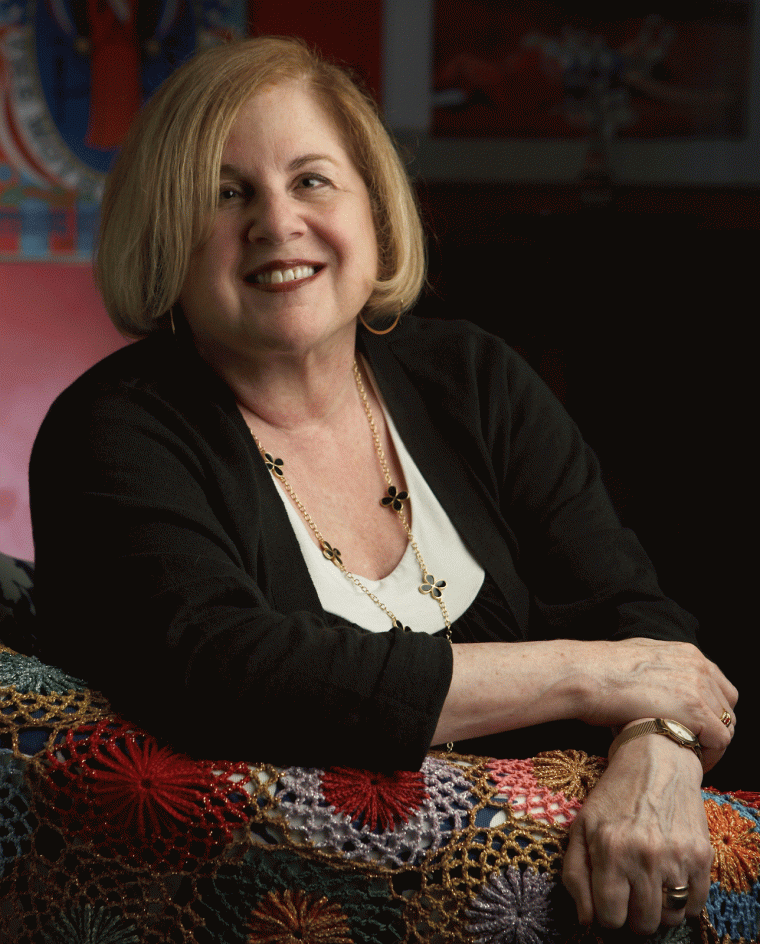
“In contrast to this angry or loving fixation on male literature, the program of gynocritics is to construct a female framework for the analysis of women’s literature, to develop new models based on the study of female experience, rather than to adapt male models and theories. Gynocritics begins at the point when we free ourselves from the linear absolutes of male literary history, stop trying to fit women between the lines of the male tradition, and focus instead on the newly visible world of female culture.”
Showalter is the first person to coin the word, gynocriticism, the critique of writing from a feminist perspective. Gynocriticism aims to understand women’s writing as an aspect of the female experience, rather than a mere product of gender difference or sexism. It is an attempt to escape the linear, patriarchal history that often surrounds literary criticism. Showalter has been criticized by some for being “essentialist,” the argument being that the literary canon would be oppressive regardless of its gender. Regardless, she is still the first try to classify women’s literature as a subjectivity, separate from the Beavorian Man (Subject) / Woman (Other) oppositional relationship.
-
Adrienne Rich, “Compulsory Heterosexuality and Lesbian Existence” (1980)

“The failure to examine heterosexuality as an institution is like failing to admit that the economic system called capitalism or the caste system of racism is maintained by a variety of forces, including both physical violence and false consciousness.”
Taking a provocative stance on gender relations, Rich argues that heterosexuality is violent. It allows for the male to gain complete access to women physically, economically and emotionally. In an attempt to break the man (Subject) / woman (Object) relation, Rich offers a way to escape the binary entirely: for a woman to direct her desires towards other women. In this way, lesbianism can be a form of feminism, in its ability to allow women simultaneously be Subject and Object in a relationship. As an exploratory piece, Rich examines the possible relationship between gender and sexual orientation, further complicating the essentialism versus constructivism debate.

-
Monique Wittig, “The Straight Mind” (1980)

“Frankly, [the definition of woman] is a problem that the lesbians do not have because of a change of perspective. ‘Woman’ has meaning only in heterosexual systems of thought and heterosexual, economic systems. Lesbians are not women.”
As a materialist feminist, Wittig desires to remove the concept of gender altogether. Like Rich, Wittig argues that lesbianism escapes the power struggles of man / woman relations. For Wittig, if homosexuals are to identify with the labels of man and woman, then they become “instrumental in maintaining heterosexuality,” a politics that reduces the woman to an object of oppression. As Wittig relates heterosexuality to a struggle of domination, she criticizes feminism itself, as it fails to question these injustices surrounding heterosexuality.
-
Alice Walker, In Search of our Mothers’ Gardens (1983)
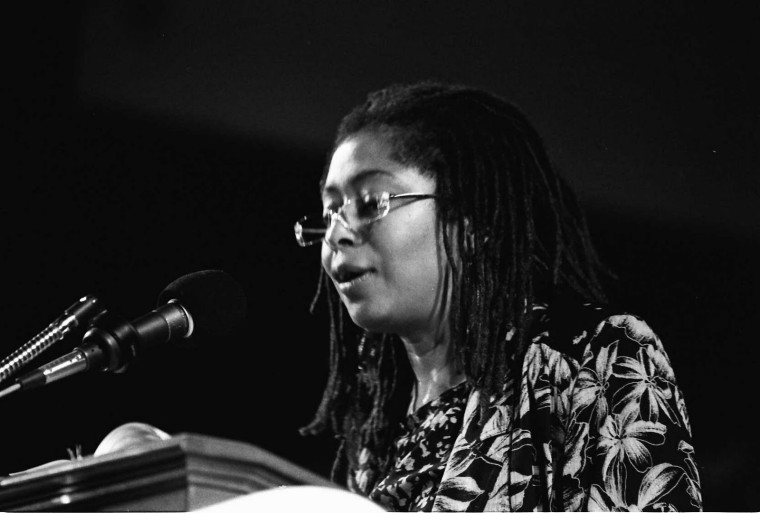
“To me, the black black woman is our essential mother—the blacker she is the more us she is—and to see the hatred that is turned on her is enough to make me despair, almost entirely, of our future as a people.”
Walker coins the term, “womanist,” a term used to classify a black feminist or feminist of color. A womanist loves other women and woman’s culture. As Walker states, “a womanist is to feminist as purple is to lavender.” By acknowledging that there are other factors that comprise a woman, Walker adds another layer to the woman experience in literature. Part III of In Search of our Mothers’ Gardens, Walker critiques Woolf’s A Room of One’s Own. Using the writer, Phillis Wheatley, Walker reveals that Woolf’s concerns for women were the facts of Wheatley’s life. Wheatley was uneducated, and as a slave, certainly had no property; however, she created beautiful poetry. In her writing, Wheatley describes a “goddess,” who happens to be her slave master. Contradicting Woolf’s central argument for women, Walker recognizes that, despite social limitations, women were, perhaps, expressing their creativity differently, such as in their gardening and oral traditions.
-
Gayle Rubin, “Thinking Sex” (1984)

“Sex is always political. But there are also historical periods in which sexuality is more sharply contested and more overtly politicized. In such periods, the domain of erotic life is, in effect, renegotiated.”
Implementing the work of Michel Foucault, Rubin argues that sex institutionalizes societal norms. For Foucault, sex is political. There is a hierarchical system in which society determines moral and mental capabilities on an individual’s sexual activity. Engaging in taboo activity lowers an individual’s moral standards in the eyes of others. Rubin furthers Foucault’s argument, suggesting that there is a “sexual essentialism” in society, the “idea that sex is a natural force that exists prior to social life and shapes institutions.” Religion, as an institution, dominates in suppressing sexual relations, asserting that sex is sinful or immoral. From these premises, Rubin asserts that sex is a political agent. There are five ideological formulations that arise: sex negativity (sex is bad), the fallacy of the misplaced scale (abnormal sexual behavior is punishable), the hierarchical system of sexual value (marriage and heterosexuality at the top, pornography and homosexuality at the bottom), the domino theory of sexual period (there a zone between morally good and bad sex) and finally, the concept of benign sexual variation (cultural differences in sex is good). By relating sex to society, Rubin adds another layer to the gender debate, as demonstrated in her later analysis of pornography.
-
Donna Haraway, “A Cyborg Manifesto: Science, Technology, and Socialist-Feminism in the Late Twentieth Century” (1985)

“The cyborg does not dream of community on the model of the organic family, this time without the oedipal project. The cyborg would not recognize the Garden of Eden; it is not made of mud and cannot dream of returning to dust.”
In this essay, Haraway uses the metaphor of the cyborg (half human, half artificial being) to challenge essentialism, which always insists on the woman as inferior. With the emergence of cyborgs comes the breaking of sexist binaries that the feminists have fought to overcome, such as man / woman, natural / unnatural, Subject / Other and so forth. Cyborg living, instead, creates connections based on affinity rather than biology or social construction. Anne Balsamo’s “Technologies of the Gendered Body: Reading Cyborg Women” (1995) wants female cyborg images to do more than challenge oppositions of human and machine. For Balsamo, female cyborgs are still culturally coded as emotional, sexual and naturally maternal, enforcing constructivist notions of male and female. Aiming to move past gender in the same way radical feminists, like Wittig, attempt to do, Balsamo calls for the cyborg to eliminate gender in its entirety.

-
Gayatri Chakravorty Spivak, “Can the Subaltern Speak?” (1988)
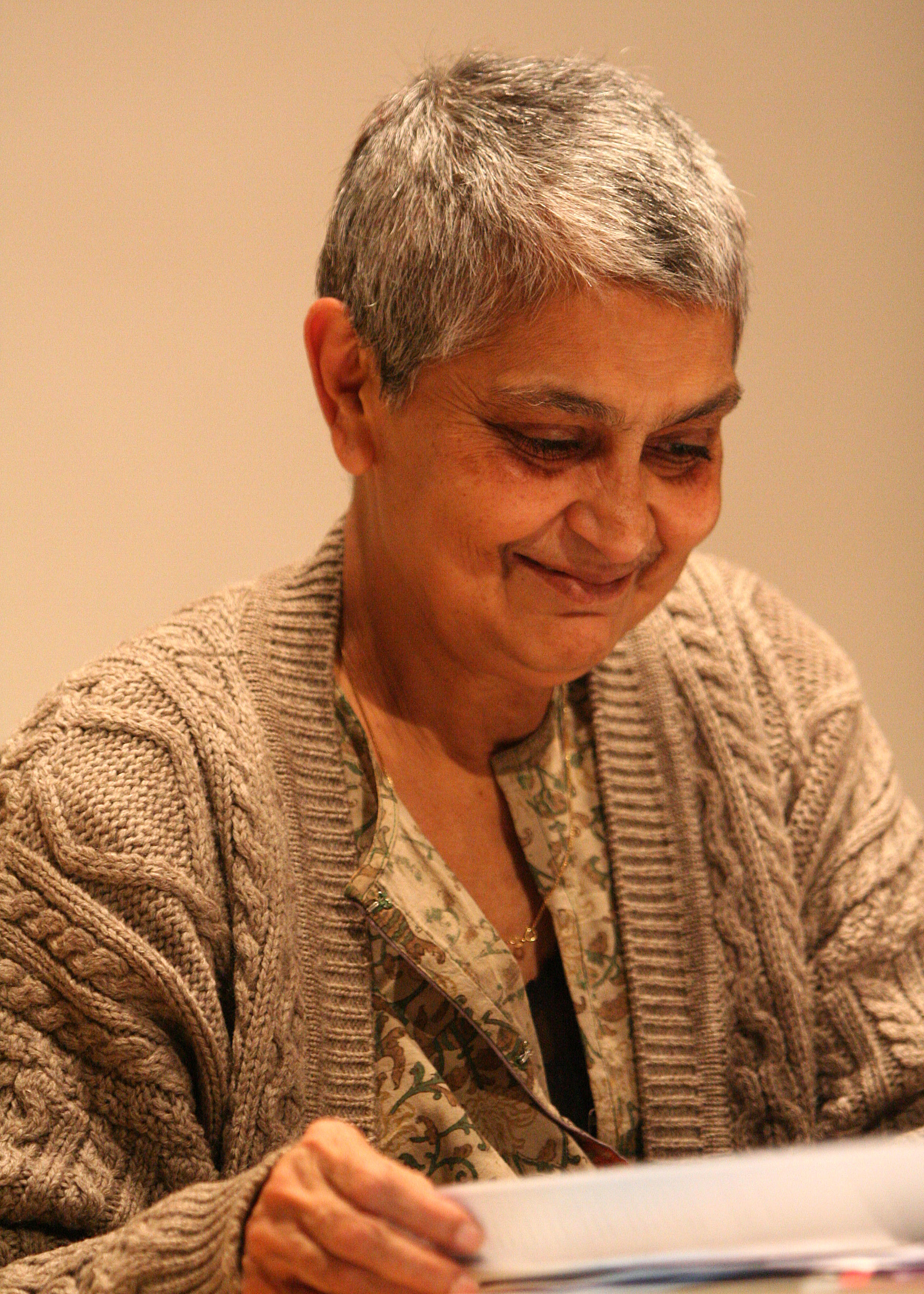
“One never encounters the testimony of the women’s voice-consciousness. Such a testimony would not be ideology-transcendent or ‘fully’ subjective, of course, but it would constitute the ingredients for producing a counter-sentence. As one goes down the grotesquely mistranscribed names of these women, the sacrificed widows, in the police reports including the records of the East India Company, one cannot put together a ‘voice’.”
Challenging the racial politics involved in banning sati, a practice in some Indian cultures where the woman widow would immolate herself at her husband’s funeral pyre, Spivak comments on how there are no accounts of this practice from the perspective of the widows. The only recordings of these events are from British colonizers and Hindu leaders, both of whom view self-immolation as oppressive to women. From here, Spivak questions whether or not the subaltern, groups that are socially or politically outside hegemonic society, can speak, for the subaltern voice is only represented by political interpretation. Performing a deconstructive analysis, Spivak examines how Foucault and others view the situation of the subaltern as a binary relationship of West (Subject) / Non-West (Other). In doing so, these theorists make it difficult to actually voice the experience of the subaltern accurately. Coining the term strategic essentialism, the temporary acceptance of an essentialist concept or position to ignite action, she reveals the difficulties surrounding feminists who work for common causes. Each woman, individually, has different agendas, and in doing so, must temporarily accept a position to act. By exposing the difficulties surrounding the subaltern experience, specifically sati, Spivak adds a post-colonial layer to the ongoing feminist movement.
-
Judith Butler, Gender Trouble (1990)

“… that gender is a choice, or that gender is a role, or that gender is a construction that one puts on, as one puts on clothes in the morning, that there is a ‘one’ who is prior to this gender, a one who goes to the wardrobe of gender and decides with deliberation which gender it will be today.”
As a post-structuralist feminist, like Irigaray, Cixous, Spivak and Wittig, Butler studies the discourse of identity, particularly identity as a construction rather than an innate biology. There is no universal “woman” for the post-structuralist. The Subject is a plurality of race, class, sex and so forth. In Gender Trouble, Butler challenges the sex/gender distinction through the development of gender performativity, the belief that gender is a form of acting, a maintained performance. It is a narrative that the Subject creates, which Butler demonstrates through the example of drag queens and kings. Gender, in this case, is not static, but is understood through “reference to what is barred from the signifier within the domain of corporeal legibility.” It is subversive in that it cannot be calculated and is always unpredictable. By suggesting that gender is a construction, Butler critiques the use of the terms “woman” and “female” by all individuals. She argues that a common mistake among feminists is trying to define “women” as a separate group made up of similar people, as it reinforces the binary of men / women. Instead of finding a definition for woman or female, Butler argues that feminists should, instead, study power relations within society and within the feminist movement itself.
-
bell hooks, “Selling Hot Pussy: Representations of Black Female Sexuality in the Marketplace” in Black Looks: Race and Representation (1992)

“They do not see this representation of chocolate breasts as a sign of displaced longing for a racist past when the bodies of black women were commodity, available to anyone white who could pay the price. I look at these dark breasts and think about the representation of female bodies in black culture.”
The essay begins with bell hooks going out for dessert with some colleagues and artists. When they enter the dessert place, there is a “row of gigantic chocolate breasts complete with nipples—huge edible tits.” The experience prompts bell hooks to reflect on the feminist movement from a black woman’s perspective. The chocolate breasts are a sign of the “displaced longing for a racist past when the bodies of black women were a commodity, available to anyone white who could pay the price.” From here, bell hooks analyzes black female bodies in popular culture, from Harriet Jacobs’ Incidents in the Life of a Slave Girl, to Sarah Bartmann’s body on display for whites, to Tina Turner’s musical career. In studying the discourse, the implied meanings behind these cultural “signs,” bell hooks reveals the historical consistency of selling the sexualized, black woman’s body, for the white man’s pleasure. In this way, bell hooks suggests that there is an additional struggle for black women, who must overcome the traditional sexualization and degradation of her identity as a body for purchase and exchange.
-
Susan Bordo – Unbearable Weight: Feminism, Western Culture, and the Body (1993)
“The representation of unrestrained appetite as inappropriate for women, the depiction of female eating as a private, transgressive act, make restriction and denial of hunger central features of the construction of femininity and set up the compensatory binge as a virtual inevitability. Such restrictions on appetite, moreover, are not merely about food intake. Rather, the social control of female hunger operates as a practical ‘discipline’ (to use Foucault‘s term) that trains female bodies in the knowledge of their limits and their possibilities. Denying oneself food becomes the central micro-practice in the education of feminine self-restraint and containment of impulse.”
In Unbearable Weight, Bordo examines the illogical, obsessive alterations to the body in contemporary culture, including plastic surgery, dieting, physical training and eating disorders. She argues that these are all manifested by cultural anxieties. Looking at these neuroses, Bordo suggests that female disorders, while previously viewed by Gilbert and Gubar as conforming to culture, are actually forms of resistance to culture. Controversial in its claim, Bordo suggests that anorexia and bulimia subvert notions of “beauty” by taking unrealistic, cultural standards to an extreme. These forms of illness become a non-symbolic form of bodily protest, making the body a text that both embodies the feminine and resists it.
In Brief
Regardless of contradicting ideas and theories, all of these feminist theorists examine the deeply ingrained hegemony that exists in society and language. Whether it be a liberal, Marxist, radical, post-structuralist or queer theory approach, each of these feminists attempt to open the individual’s mind to another way of thinking—a thinking beyond ideology, the societal lessons we forgot we were taught as they are so deeply embedded in our social code. By deconstructing language, analyzing binary thinking and openly debating power structures, these theorists expose flaws found in our culturally accepted social dynamic. In this way, feminist theorists challenge prejudices and force their audience to escape ideology. While some of these texts are more complicated than others, it is this complicated thinking that leads to a practice of looking closely at human relations. So, whether or not you agree with any of these theorists, give them a read. Their work will exercise your mind, and perhaps, change the way you think.

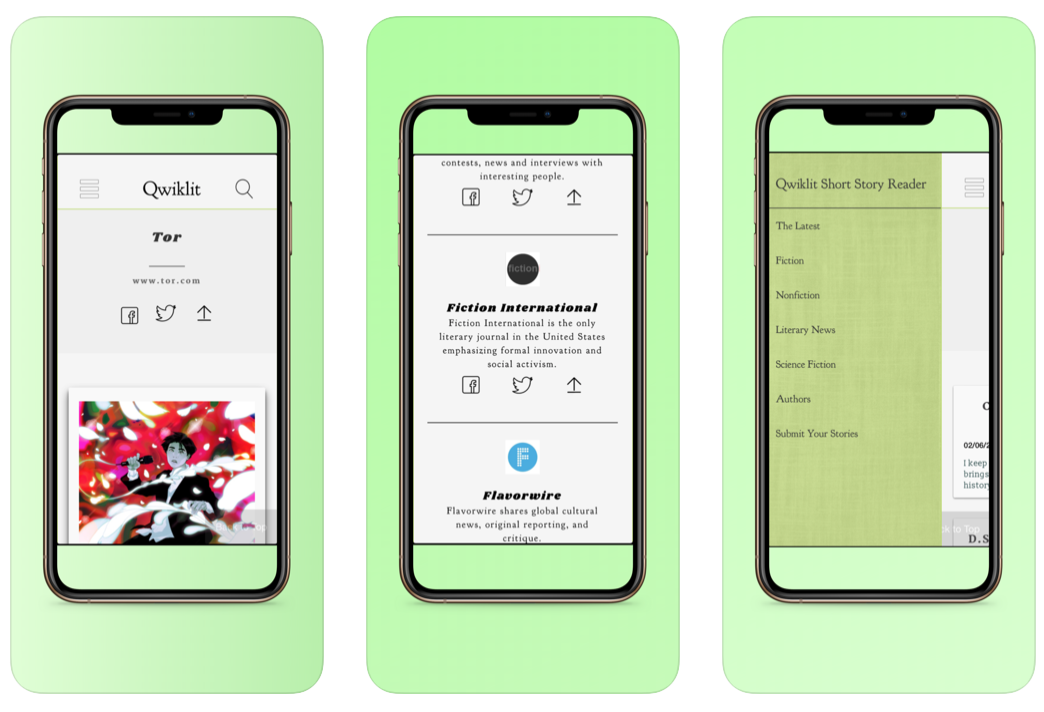




With havin so much written content do you ever run into any problems of plagorism or
copyright infringement? My website has a lot of completely unique content I’ve either created myself or outsourced but it seems a lot of it is popping
it up all over the internet without my authorization. Do you know any ways to help stop content
from being ripped off? I’d definitely appreciate it.
I find modern feminist theory to be lacking in that in pretends to be science and is developed in social sciences, and yet it spends so little time developing actual theory because it is so obsessed with advocacy and philosophic concerns. No wonder so many people are skeptical of the social sciences, the bar is set too low on actual scientific methodology. I wish there were some books presented here that took a more critical and scientific view of feminist theory into account. ‘A Critique of Feminist Theory’ by Kathy Lay, James G. Daley would be a nice start, and they are very pro-feminist theory themselves.
I don’t really see what science has to do with basic human rights.
is updated frequently with free advice about Google Ad – Words strategy, tactics,
tips tricks and techniques for success in Ad – Words advertising.
The website speed test at Secret Search Engine Labs will analyze how fast a page
on your site is loading and give you tips on how to improve
it. Any time you create new content or share new links on your website or blog,
be sure to do so by diversifying all of the link and anchor text you implement, regardless of the market you represent or the industry you
are working in.